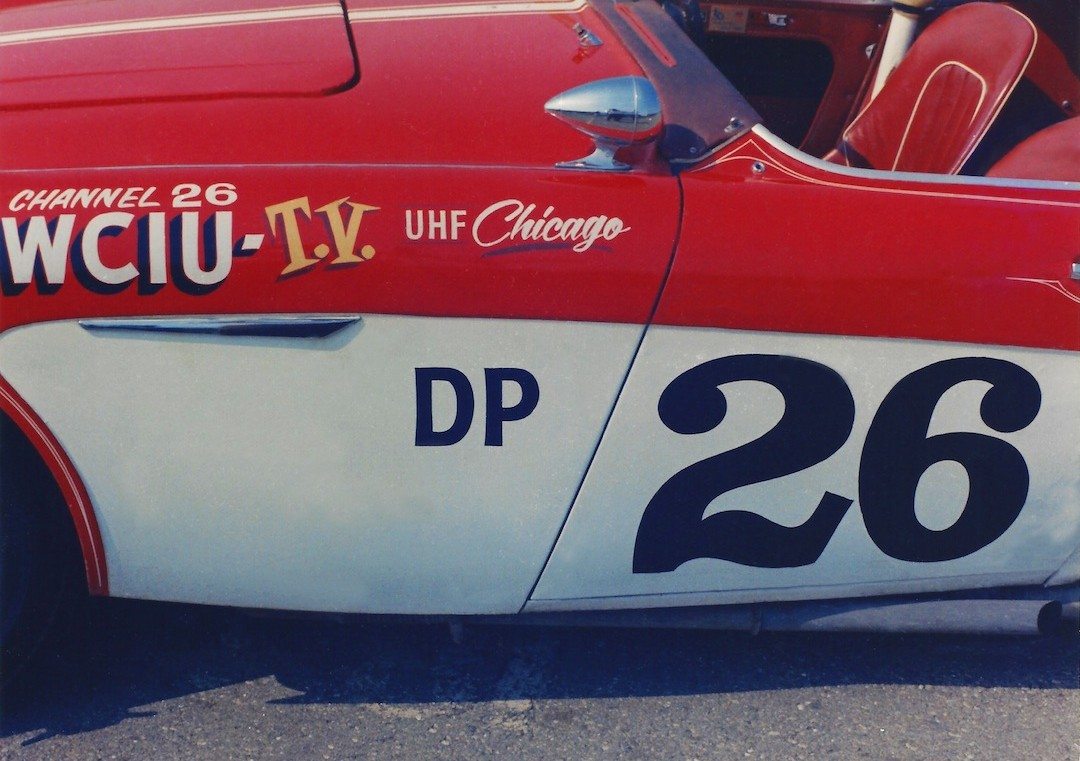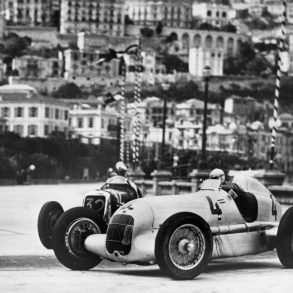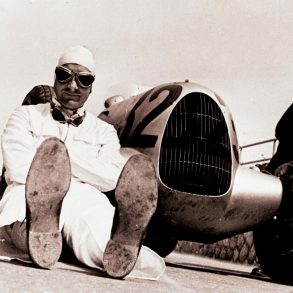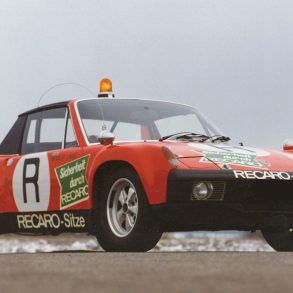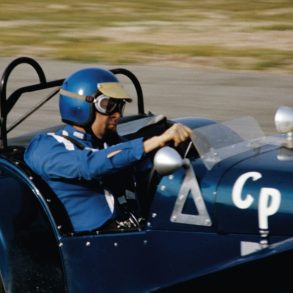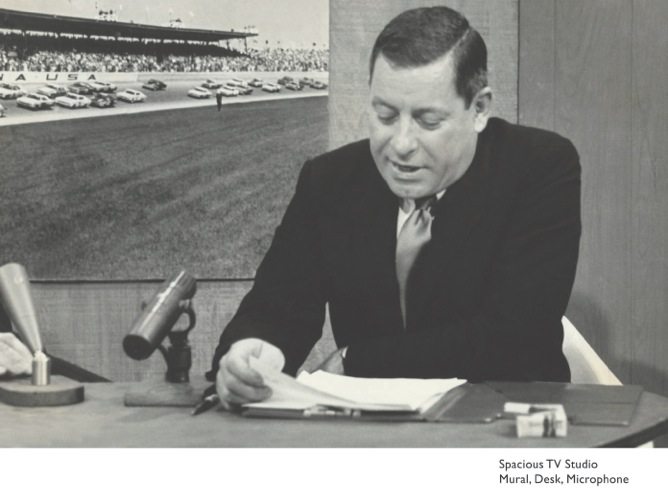
Me: “That’s not the same thing. I’m talking about a real weekly show … scripted … ongoing. My Chicago 1966-67 show was on the tube for 150 weeks, in a major market.” Pete said, “Since when isn’t L.A. a major market?” “Apples and oranges,” I replied as he headed for his stretch limo.
I would go on to work for him a few years later as a producer on Motor Trend TV, but here’s the skinny on my 150-week Motorsports International television show, which I believe was the very first one of its genre. As I look back, I wonder how I—not we, I—pulled it off, because I created it, wrote it, produced it, hosted it and did the marketing…and I didn’t know there were any ground rules or road blocks.
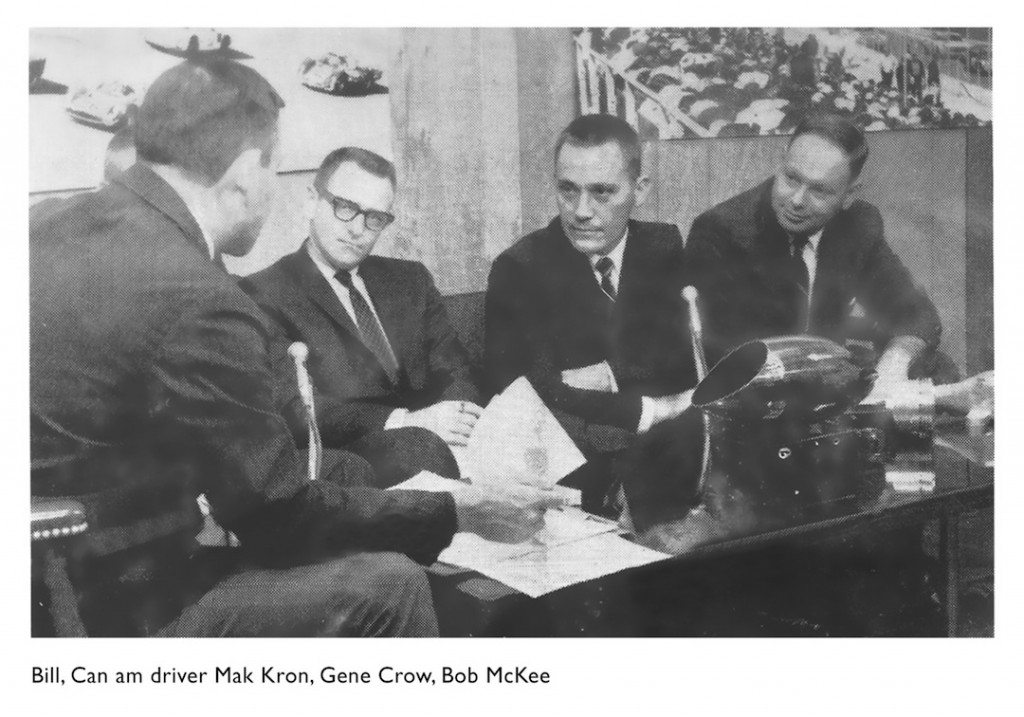
It was 5:30 PM, and I was having a libation at Hobsons Oyster Bar on, Chicago’s Rush Street around the corner from the Wrigley Building, talking cars with a few buddies before we headed home to the suburbs. Jack Morgan, an ad salesman for local TV station WCIU, popped in and said, “Bill, I got a deal for you. Seeing that your’e a car guy, have done some racing and have been involved with tons of studio TV production at NBC in New York, this little tidbit may be of interest. The new James Garner movie, Grand Prix, is going to have its premiere at the Chicago theater right down the block from us next week, and they want to do some special promotion. The producer of this MGM epic, John Frankenheimer, created a really exciting eight-minute promotion video of the highlights of the show and has offered it to the major TV stations in town so they can run it and hype this new movie.”
I might add here that of the eight television stations in Chicago, I would place WCIU-TV about 14th—dumb programming and antiquated facilities.
Jack said, “Though the big local TV stations certainly liked the promo, they really didn’t know how to schedule it, as it was an oddball length and too long for their normal news show. So they passed on it. Therefore Bill, Channel 26 thought that we would run a half-hour live television show all about auto racing, you as host, and we run the Grand Prix movie promo. What do you think? Can you put a half-hour together and host it live next week at our station in the Board of Trade building?”
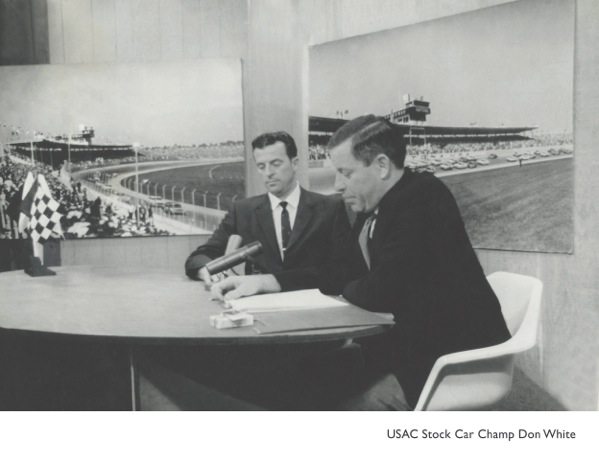
More about WCIU, channel 26: It ran mostly old, old movies and cheap local TV commercials. It had one old studio with a barebones lighting grid, ancient control room and a couple of cameras and somehow managed to stay in business. Yes, it was black and white, while the other stations were all running color, and it was UHF in a market of VHF television stations with network affiliations.
I put a haphazard format together to interview Al about racing in Europe, racing in the U.S. and the different forms of racing, as we led up to the very exciting eight-minute Grand Prix movie trailer. Our set in this barn-like studio was a desk and a black-and-white camera focusing on the two of us. Welcome to the big time—amateur, but it went smoothly.
Somebody must’ve been watching and liked it because the next day, the station manager called me and said he thought that was pretty cool, and they had a lot of phone calls from people saying, “We want more auto racing information.” He asked me, “Would you like to do this weekly? One hour, Tuesdays at 8:00 o’clock PM and it’s all yours. We can’t pay you, but you can get your own sponsors or even a title sponsor.” It sounded like an ego-centered challenge, so I said, “Let’s go,” and as a result, Motorsports International was on WCIU-TV Chicago every week for 150 weeks. After a few weeks, I got the hang of it and formatted the show so we had race results, including stock cars, drag racing, sports cars and Formula One information when we could obtain it.
The crazy black-and-white program caught on, and we had a long list of racing personality guests, including Bob Bondurant, Bob Tullius, Carroll Shelby, Jim Hall, the Bettenhausens, Erik Carlson, Donna Mae Mims, the Unsers, race queens, crew chiefs, race executives, all the top drag racers plus Andy Granatelli of STP, who agreed to put a few bucks into the production of the show. After all, we were both Chicagoans.
It still remained a mom-and-pop operation. We had no facilities for showing slides, so I scoured newspapers, magazines and car company PR departments for photographs of all the drivers, which we mounted on 8 X 10 flip cards, and a studio helper actually flipped these when we would mention that, “Mario Andretti won at Milwaukee yesterday.” Flip pic.
The station did have a film chain, and a highlight of the Motorsports International Tuesday evening hour was our showing great race films from Champion Spark Plug, Shell Oil’s History of Racing and auto factory racing footage. These films were made primarily to show at car clubs. Now, they had an audience in the thousands. To screen and edit these 16-mm films, I borrowed a 16-mm film projector, set it up in my kitchen and projected pictures on my wall. High tech?
Major accessory companies flew in their top drivers, like Dandy Dick Landy, Art Arfons, Mel Kenyon and Craig Breedlove, to join us on the tube for a 15-minute rap, on a Tuesday night. In a stroke of genius we opened up a phone line for viewers to call if they wanted to question a guest. After a few stupid calls like, “Why won’t STP flow out of the can on a cold day?” We set up a four-second delay that took care of the screwballs. We would take about six calls and the phone counter said there were 600 we could not answer.
It was a bit crazy. A one-hour, prime-time, major market television show, black and white, about what many thought was an unpopular subject—auto racing—and it was going off the charts audience-wise. How do we know it went off the charts? All of a sudden my picture appeared on the cover of the Chicago Sun-Times TV Guide…one million readers. Then we found we were in contention for a regional Emmy award. We were up against six Chicago-land TV shows, including powerhouse WGN-TV Chicago Cubs telecasts, and the awards were to take place at the Marriott Hotel, black tie, with Sammy Davis Junior as MC.
WCIU-TV was ecstatic. They had never, ever come close to being nominated for any type of award. However, I pissed everybody off by saying I was not going to go to the event because the TV show was really a hobby. My main job was with an ad agency. The TV station reserved a table for 10, and my wife threatened to leave me if I did not make the event. I held out until the evening o fthe banquet, dug up a tuxedo and attended. Motorsports International came in second to the mighty Chicago Cubs. Unreal.
As far as I know, Motorsports International, in 1966‒1967, was then the only weekly motorsports TV show on the air anywhere in the U.S. Today there must be 20 weekly shows.
I sure didn’t make any money from the program, and as it became more and more popular it took more and more time to produce. Then I received a call from the ad agency for the Dodge division, Chrysler Corp, asking if I wanted to go to Detroit and handle motorsports promotion for Dodge/Mopar and create the Dodge Hi performance ad program…Scat City…is where it’s at!
I took it…the rest is history.


